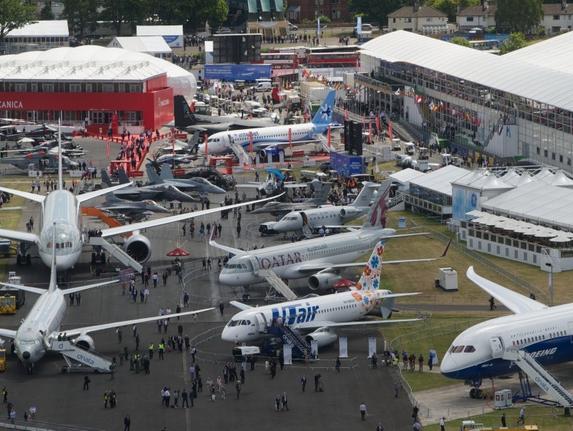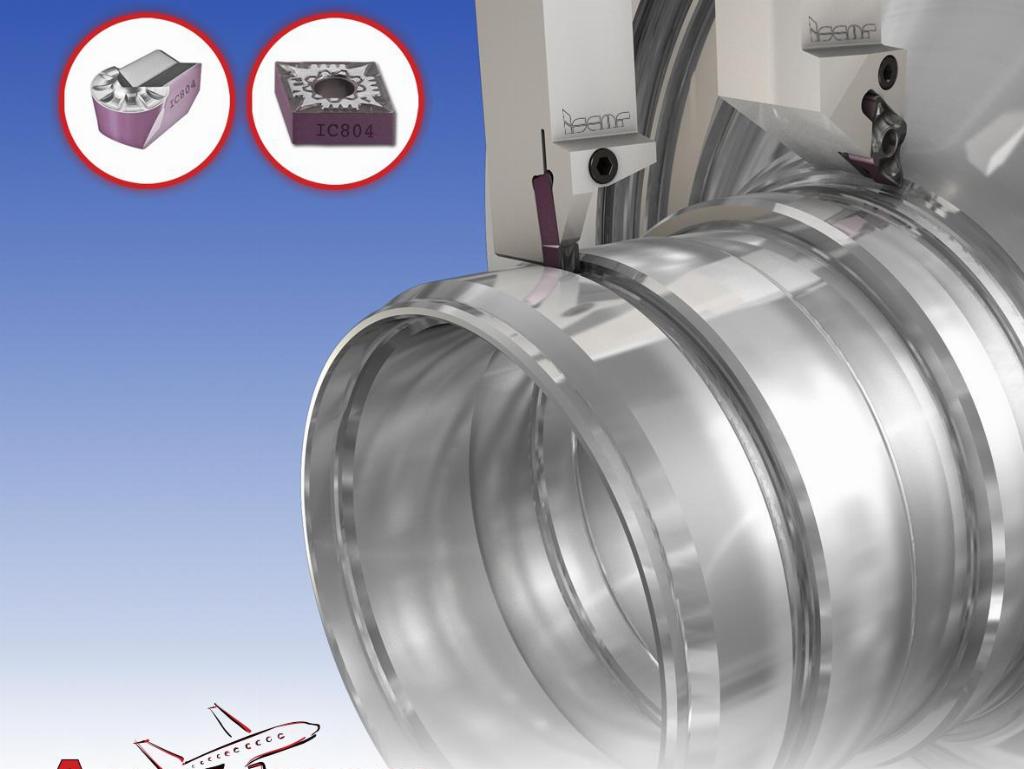Giving a push to aero productivity

‘Push Your Productivity’ was Starrag’s theme for this year’s Tech Days – a manufacturing extravaganza held at the company’s headquarters in Switzerland. The event focused on how customers can profitably machine aerospace parts such as blades, blisks, impellers and landing gear. PES reports.
At Starrag’s recently held Tech Days event, numerous machines and complementary manufacturing technology demonstrations highlighted how customers can benefit from shorter lead-times and lower piece part costs from its renowned machining technology.
The 250+ visitors from 17 countries witnessed a seemingly endless flow of manufacturing expertise to help them achieve bottom line savings in their production processes.
This included the launch of the new ultra-rigid and robust titanium-cutting horizontal machining centre, the STC 1250 HD, the first machine in its class with hydrostatic guideways featuring zero friction/non-stick/slip in the X-axis.
The result is highly impressive roughing times and dynamic, precise finishing of parts – reducing roughing times by over 50% in some instances. In addition, the machine’s higher acceleration and jerk rates lead to more dynamic finishes and frictionless/no micro-vibration in the guideways means more precise parts.
Another highlight was the Ecospeed F machining centre – the latest addition to the machines in Starrag’s Aerospace Competence Centre – with integrated Sprint Z3 parallel kinematic machining head which, for example, contributes to savings in machining time for an interior aerostructure part from 14 hours to just three hours and 40 minutes.
There was also a demonstration of simultaneous 5-/6-axis machining of landing gear parts on large-capacity mills, focusing not only on improved cutting of complex shapes in difficult materials but also on the challenges of producing higher volumes (using automation) often in new materials (in response to the impact of ReAcH regulations) and, as always, under extreme price constraints.

Rein supreme
There were also presentations of how Starrag machines can improve productivity including how a Droop+Rein FOGS machining centre is meeting the challenges of machining and matching aluminium alloys and carbon fibre parts to an accuracy of 55µm over a machining envelope of 22m³, and of a 65mm bar-fed LX 021 machining centre producing variable guide vane blades measuring 115mm long and having aerofoil lengths of 70mm and chords up to 21mm wide. The machine was performing, facing, profiling, mill finishing and groove turning in a cycle time of just 21 minutes, and it featured milling force monitoring via a ProMicron system.
Another highlight at the event was a TTL software animation which showed how the software can effect a blade repair at 20%-30% the cost of a new blade, plus details of a new spindle drive unit, an 18,000rpm HSK-100 for all-round metals machining. This was complemented by an array of complementary technologies demonstrated by partner companies at the event.
Siemens demonstrated its Sinumerik CNC system with Digital Twin software which effectively creates a closed loop between digital design, machining simulation, CAD/CAM and post-processing to not only minimise the programming of complex parts but also to eliminate costly material test cuts.
Caron Engineering showed how its Tool Adaptive Control system can run tools at up to 25% higher rates and extend tool life by up to 25% by process monitoring via sensors for power usage, vibration, and coolant pressure and flow, for example.
Hexagon Metrology focused on the ‘time costs money’ message while demonstrating its NC Measure machine tool probing/measurement/toolsetting expertise that integrates the results from a multi-sensor radio wave receiver.
Interestingly, ultrasonic wall thickness measurement was shown to an accuracy of 10µm – and it ‘ignores’ any workholding that may encroach on the set up. Furthermore, on-machine laser scanning can automatically inspect and compare workpieces against CAD models.

Going live
Live demonstrations showcased the impressive capabilities of the new STC 1250 HD on titanium using porcupine, face and rigid milling tools, and how its 12-tonne column can be easily moved by hand.
The machine – said to be the first in its class featuring hydrostatic guideways with zero friction/non-stick/slip in the X-axis (so, no wear and reduced maintenance compared with conventional box guideways) – achieved excellent roughing times and dynamic finishing resulting in more precise parts. Indeed, it is capable of reducing roughing times of structural parts by more than 50%.
On one test part – a frame door forging of Ti6A14V and measuring 80mm deep x 300mm wide and 1,220mm long – the machine’s roughing and machining time savings also demonstrated a 33% reduction in energy consumption.
With pallets of 1,000mm by 1,250mm capable of accommodating workpieces up to 2,200mm by 1,950mm, the machine has a torque rating of 30,000-50,000Nm, an 80mm drive chain (compared to the traditional 63mm) and it can achieve roughing cuts up to four times deeper in titanium than traditional machines.
The in-situ Ecospeed F 1540 machining centre is the smallest in the Ecospeed family but like its stablemates, uses Starrag’s Sprint Z3 machining head to impressive effect – the Ecospeed excels at aluminium removal, hence the dramatic time saving of the aerostructure part from 14 hours to just three hours and 40 minutes.
Starrag has been meeting the challenges of landing gear machining since the early 1990s and today utilises simultaneous multi-axis machining (in one case, on a Droop+Rein FOGS HD mill, simultaneous 6-axis operation) to produce the highly-accurate complex shapes in difficult materials, as well as STC and Heckert machining centres for smaller workpieces – the latter undertaking turning as well as milling.
By understanding the challenges and combining highly efficient machines and tooling, Starrag emphasised that it can not only improve cycle times, but also cut the number of tools used and their respective loads. This equates to longer tool life and lower overall tooling costs.

Focus on the future
The keynote address at the two-day event by Dr Matthias Lange from Premium Aerotec (formerly part of Airbus) not only highlighted the rising demand for passenger aircraft – forecast to be 40,000 new aircraft for delivery between 2022 and 2041 – but also pinpointed how this Tier 1 aerospace machinist is driving up sustainability in its own manufacturing.
This complements the engine manufacturers’ quest for fuel burn reductions of 20%-40% and, for example, enhanced end-of-life recycling, optimised noise and emissions, and improved design and manufacturing methods as well as more effective and efficient supply chain initiatives.
The company annually produces around five million parts in 25,000 variants at different locations in Germany and Romania, and it uses 21,000 cutting tools on its production lines of Starrag machining centres.
This comprises 24 machines including Ecospeed machining centres with Z3 heads and integrated coordinate measuring machines processing batch products, and standalone machines for urgent parts, seven dedicated to titanium machining, and 11 multi-tasking turn-mill machines for rotational workpieces.
Dr Lange also focused on Premium Aerotec’s use of electricity (and photovoltaics) and explained that the highest energy use at the company was in machining. The target therefore is to reduce this by working closely with suppliers for improved (milling) routines, more effective use of coolant and improved tooling. He also added that optimised feed rates and better process and tool wear monitoring will also contribute to savings via the consumption of less energy per part.
While acknowledging Starrag’s inherent aerospace expertise – and pleased that the global aerospace market is back on track after COVID – CEO Martin Buyle also identified one of the ways forward for Starrag and all its product ranges of Berthiez, Bumotec, Dörries, Droop+Rein, Ecospeed, Heckert, Scharmann, SIP, Starrag and WMW machines.
“Starrag historically has never competed on price and quantity – we’ve always focused on competence and reliability,” he affirmed. “From aerospace to transport to wind energy, we believe that each of our product ranges is undoubtedly the best in its respective field coupled with our globally recognised expertise in applications engineering and standalone machine systems solutions.”
He concluded: “Our customers consider the true cost of machine ownership including the lifecycle savings for every component and we are committed to helping them achieve significant manufacturing cost reductions. Our goal now is to spread the word across every industry sector.”
Starrag
www.starrag.com















